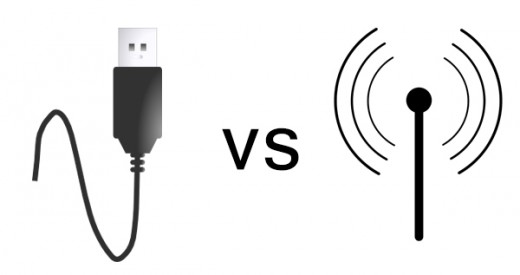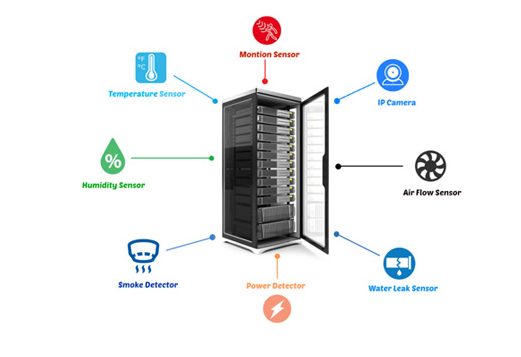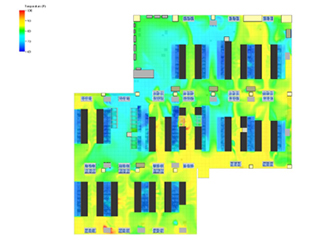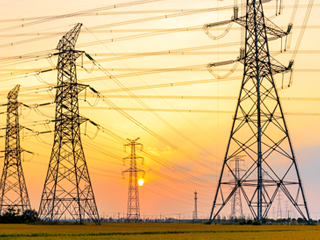Environmental monitoring gives information to data center personnel regarding the condition of the whole facility. It does not matter how small a data center is. The facility has to remain online 24/7.
Environmental monitoring provides real-time access to the temperature, humidity, and other environmental stats of the data center. The data logged on the system can be accessed at all times. In addition to real-time, historical data allows analysis of trends and diagnosis of problems.
Environmental monitoring systems send real-time alerts to the operator if sensor parameters are outside of defined thresholds. The data center environment is highly sensitive. A small temperature change can be a severe threat to the equipment and requires immediate action. With environmental monitoring sensors in place, data centers can prevent damage and financial loss.
Installing a wireless environmental monitoring system is not as complicated as it is useful. Wireless technologies other than WiFi are available, which provide enhanced security. Wireless radio such as LoRa does not even touch the main IP network. Here are some guides to follow:
What is the Best Environment Monitoring System?
An environmental monitoring system delivers reports or sensor data to make decisions regarding the data center operations. In choosing a provider, reliability and experience are the most important characteristic to look for. Also, choose an environmental monitoring system that meets the scope or size of the facility.
The system comprises multiple elements. Sensors, base units, and so on. Most of the time, sensors are brought separately based on what a data center wants to monitor. Ambient temperature, server rack hot and cold zones, humidity, water leaks, CO2 levels, power fluctuations, and physical security breaches are what a data center, in general, needs to monitor.
Present conditions or future plans of the data center must be taken into account. Make sure to consider your present situation and future growth. This will help in identifying the best type of system for your data center operation. This will cover the number of base units and what types of sensors you need.
The provider does not need to inspect or make an ocular visit to the site to determine what products you need.
Where to Install the Environmental Monitoring Sensors?
A monitoring system is easy to install and can be installed by the user even without professional help. However, professional service might be needed when dealing with building automation systems (BAS). It depends on what the procured environment monitor needs. In this situation, more often than not, the provider can recommend a local dealer or services that could help you.
Installation of base units only need these four steps:
- Server Rack: Base units are usually attached to servers where the sensors are installed.
- Electrical outlet: Must be located near the racks where it is accessible for the base unit to the plugin.
- Internet: A fast internet is necessary to run, not just the environment monitors but also the whole data center.
- Connect and Set up: The sensors must be integrated with the based units and the base units to the internet for the whole system to work as it should.
Wired sensors connect to base units with cables. These can be extended up to 300 feet. Sensor wires usually run through walls and ceiling, thus may require additional work to install.
Some manufacturers or companies offer a whole system of sensors, based units, and software. This type of provider assures compatibility and smooth operations. At the same time, there are universal components that you buy separately and assemble. The risks in this type of system are that there is no guarantee if the components are compatible or deliver accurate data.
Internet
The remote environment monitor is composed of wireless sensors and base units. Without cables and wires, the data will be generated with the help of a fast and unbothered connection. The setup and programming are usually done in the user’s interface site, and it is recommended to use a laptop for the initial setup.
It becomes easier to access or monitor the data center off and on-site using cellular phones and mobile gadgets with the internet. Multiple users at the same should access the system. It will be easier to send alerts and sensor readings through the internet whenever it detects something out of its presets.
Wired vs. Wireless
Many industries are using sensors to automate operations and to fasten the analysis of environmental conditions. As a system is used in different industries and purposes, it is important to acquire the right environment monitor sensors for your facility.
-
Wired Sensors
Wired and wireless sensors both have their list of advantages and disadvantages. You will not determine the choice just based on that. Examine how the sensors will be used in your terms and applicable in the facility you have.
Most of the time, the wired sensors solutions can be what you are looking for. This type of sensor can be directly linked to the base units. Wired sensors do not need constant replacement, which could save you some money. But wired sensors also required large spaces and were more challenging to maintain. The more sensors in the facility, the harder it gets to maintain.
-
Wireless Sensors
This new type of sensor technology is becoming more popular. This type of sensor is cheaper and easier to ins

Photo credit: www.audiocruiser.com
tall and has no wires to maintain. In addition, wireless monitoring allows a more flexible option for the user. It can be programmed depending on the facility’s needs and accessed by multiple users and on-site using mobile gadgets.
As mentioned earlier, wireless sensors also have disadvantages. Since they have no wires that directly linked them to the base units, the distance could hinder if they are not strategically installed. Wireless sensors can have difficulty in receiving and gathering data if the connection is not strong enough. This makes the delivery of data unpredictable. There could also be interference from other wireless devices such as cell phones. The disruption could prevent the system from receiving critical information.
On the other hand, aside from the technical advantages and disadvantages of wireless sensors. It is also a good thing that wireless sensors are more sustainable and reduce the need for metals, rubbers, and plastics.
Data Logger
Many environment monitors have data loggers to record data from the sensors. This allows you to identify trends of equipment performance and overall environmental conditions. Remember that this data provides information on potential problems and threats. As an operator, you will want to go through this data regularly to counter or implement immediate actions against the threats.
Damages from temperature fluctuations, humidity build-up, are significant problems in data centers. These problems may cause downtime and disruption, which may cost $500,000 per minute.
Make sure to include data loggers when considering an environment monitor. Or some sensors already have a built-in data logger, which could cut your cost for additional equipment.
Power Outage Backup
You will need the environment monitor more than ever during power failure. It is important to consider a system that you may rely on during this unexpected downtime. This will help you monitor the equipment and environmental conditions even without a direct power source. These systems are usually equipped with batteries that could last for hours. The sensors will continuously record data and send alerts if they detected abnormalities during the outage.
If the environment monitor uses the internet, then the connection must stay up to receive an alarm. But some systems have a built-in phone line connected to the user’s interface. If there is no other way for connection, as the sensors are continuously collecting and storing data, then the data could still be accessed when the power is back on.
Add- Ons
In procuring an environment monitor, it is given that you might be spending some good amount of money for that. You better discuss and clear it with the manufacturer what are the limitations and additions of their system. This helps in the smooth usage of the system. It is better to know it earlier and be ready to purchase additions like premium subscriptions, features, phone call alerts, or unlimited data logging access.
Technical Support
Always look for the most reputable and reliable manufacturers. Look for a warranty that offers complete repair services. Also, watch out if they have a knowledgeable tech support team willing to assist you all through your process. They should be able to diagnose and guide you through setup over the phone.
Some manufacturers provide loaner units if your units need on-site repair.
AKCP Environmental Monitoring System

AKCP Environment Monitoring System
With over 30 years of experience in Data Center monitoring, AKCP is the world’s leader in SNMP-based Data Center Environment Monitoring Solutions. AKCP has a variety of wired and wireless to choose from depending on your need.
The AKCP Environmental monitoring system wired sensors could be expanded up to 300 feet and applicable to any sensorProbe. Wireless sensors are powered by a battery that could last up to 10 years.
Ensure that your environmental conditions are within required parameters, log, and graph data over time, and receive real-time alerts when user-defined sensor thresholds are exceeded. The sensors can also be used as a data logger with data buffered and synchronized to the gateway when in range.
Wireless Tunnel Sensors
AKCP created the market for environmental monitoring in the data center. They have a wide range of environmental sensors that cover the needs of large data centers down to small in-house server rooms.
Customizable and Expandable Wireless Tunnel Sensor Gateway
View data via the embedded Web UI or consolidate data from multiple gateways on AKCPro Server
WiFi: If the WTG is placed in an area you don’t have an accessible Ethernet cable for network connection, use the WiFi option to connect with your IP network. WiFi can also function as a hotspot for direct access without a wired or wireless network.
Cellular: For sites that have no internet connection available, the cellular data modem will transmit all your sensor data over the cellular network. In standalone installations, the cellular modem can also be used for sending SMS
GPS: Geolocate your WTG and monitor locations on the AKCPro Server world map. Geofence the device and know when it has moved out of a defined area.
Modbus: RS485: RS485: Connect your WTG to 3rd party Modbus devices for monitoring generators and other industrial equipment.
Basic Expansion Bus: The BEB port allows you to add SPX+ style BEB units for additional dry contact inputs, or wired sensors.
Conclusion
Data centers are where the lifeblood of many businesses is stored. It is only suitable to have the right monitor to protect it from harmful environmental conditions. And choosing the right environment monitors not just protects businesses but our data center’s reputation as well.
The environment monitor can only do wonders if it keeps a full tracking of the aforementioned environmental factors. Your data center‘s value will also be of greater significance if you run it through an integrated management system. And that’s the type of commitment you need for your data center monitoring endeavors.
Reference Links:
http://sensor-works.com/wireless-sensors-versus-wired-sensors/
https://www.missioncriticalmagazine.com/articles/93302-how-to-install-an-environmental-monitoring-system-in-a-data-center
http://www.sphomerun.com/data-center-sales-and-marketing-blog/top-5-data-center-environmental-monitoring-systems
https://dl.acm.org/doi/abs/10.1145/3361821.3361824
https://www.perle.com/applications_solutions/data_center_management/environmental.shtml




